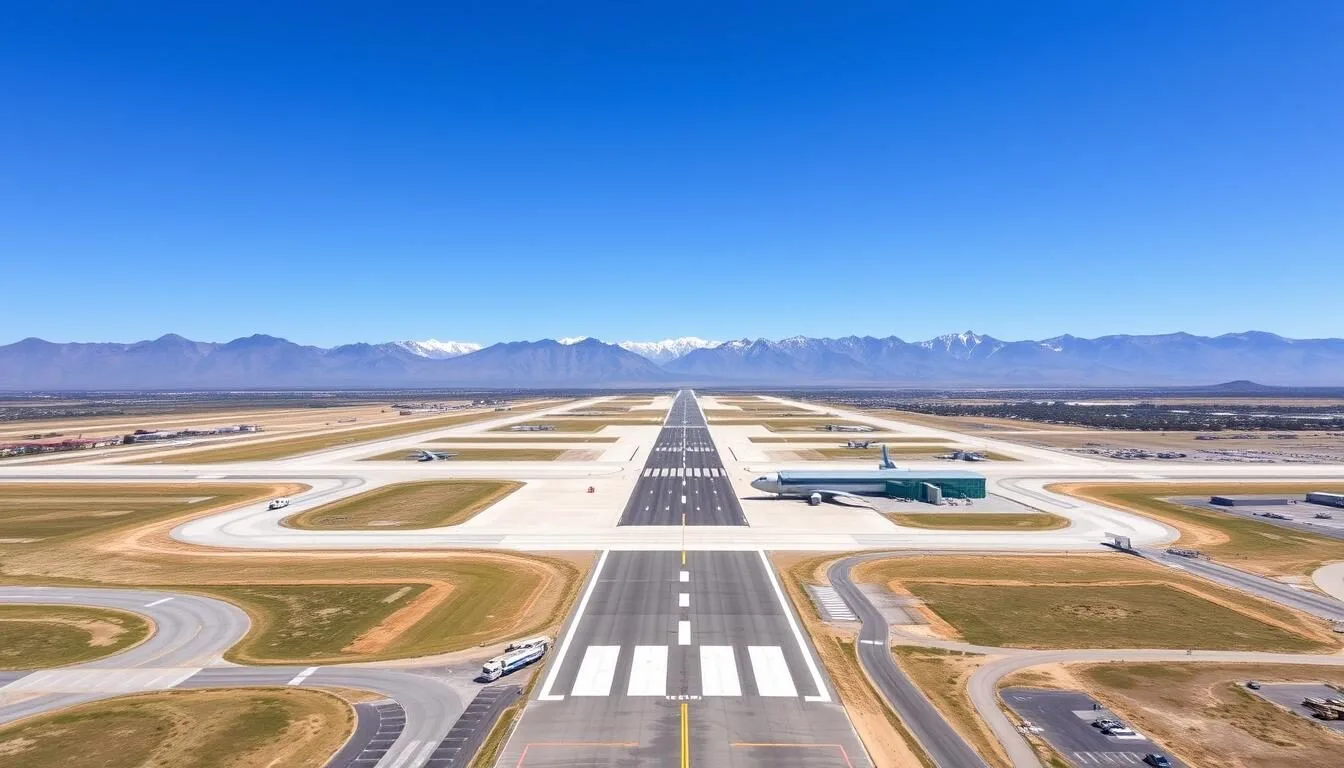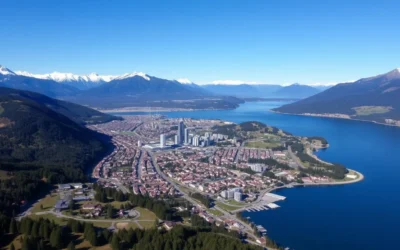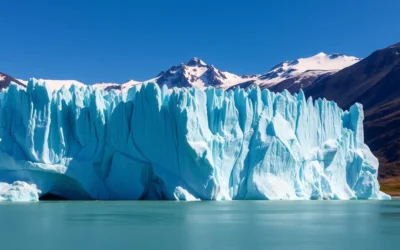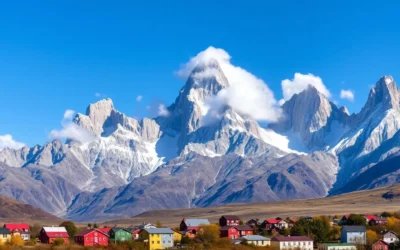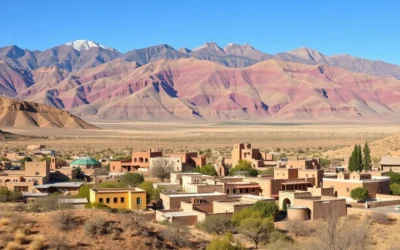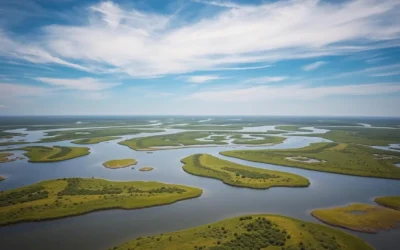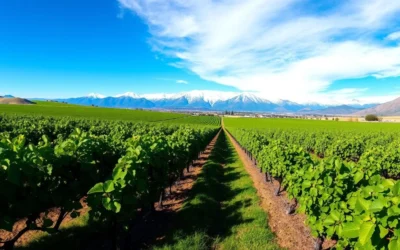Did you know that Neuquén is home to some of the world’s most important dinosaur fossil discoveries, including the remains of Argentinosaurus, the largest dinosaur ever found? This hidden gem in northern Patagonia isn’t just a paleontologist’s paradise—it’s a breathtaking destination where crystal-clear lakes meet snow-capped Andean peaks, creating a playground for nature lovers and adventure seekers alike. Whether you’re drawn to the majestic Lanín Volcano, the serene waters of the Seven Lakes Route, or the rich cultural heritage of indigenous Mapuche communities, Neuquén Province offers experiences that will captivate your imagination and feed your sense of adventure.
Getting to Neuquén
Neuquén is accessible through Presidente Perón International Airport (NQN), which receives regular flights from Buenos Aires and other major Argentine cities. If you prefer overland travel, long-distance buses connect Neuquén with major cities throughout Argentina, offering comfortable options for budget travelers.
Ready to Explore Neuquén?
Find the best flight deals to start your Patagonian adventure!
For travelers coming from Chile, there are regular bus services crossing the Andes, particularly from cities like Temuco and Osorno. The journey offers spectacular mountain views but can be affected by weather conditions in winter months (June-August).
Best Time to Visit Neuquén
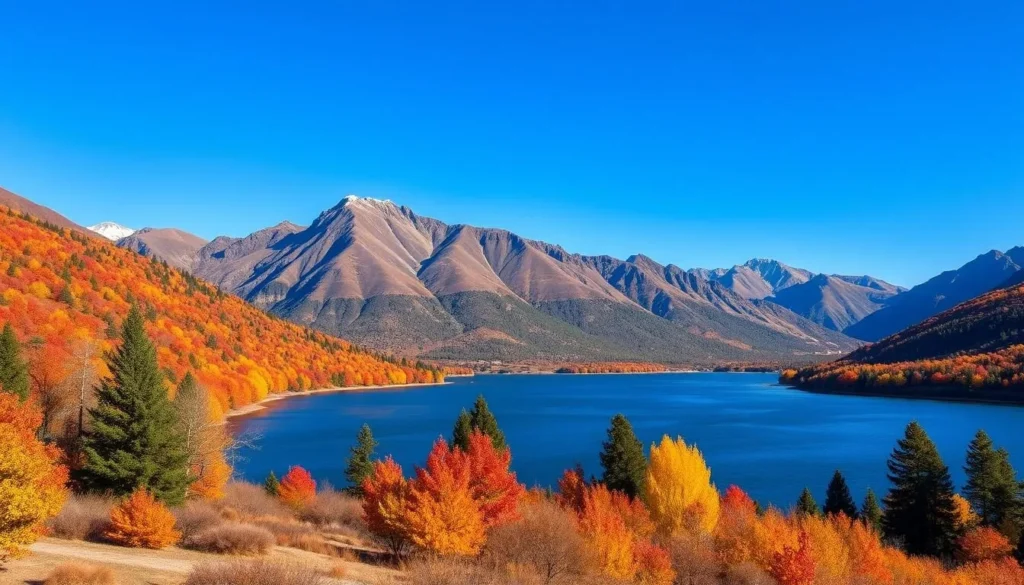
Neuquén enjoys a temperate climate with distinct seasons. The best time to visit depends on your preferred activities:
Summer (December-February)
Perfect for lake activities, hiking, and outdoor adventures. Temperatures range from 75-90°F (24-32°C). This is high season, so expect more tourists and higher prices.
Fall (March-May)
Offers spectacular foliage as the forests transform into brilliant shades of red and gold. Temperatures are mild (50-70°F/10-21°C), and tourist crowds thin out.
Winter (June-August)
Ideal for skiing and winter sports at resorts like Cerro Chapelco. Temperatures range from 30-50°F (-1-10°C). Snow can affect mountain passes and road conditions.
Spring (September-November)
Features blooming wildflowers and pleasant temperatures (50-70°F/10-21°C). A great time for hiking and outdoor activities before the summer crowds arrive.
For the best balance of good weather and fewer crowds, consider visiting during the “shoulder seasons” of late spring (November) or early fall (March-April).
Getting Around Neuquén
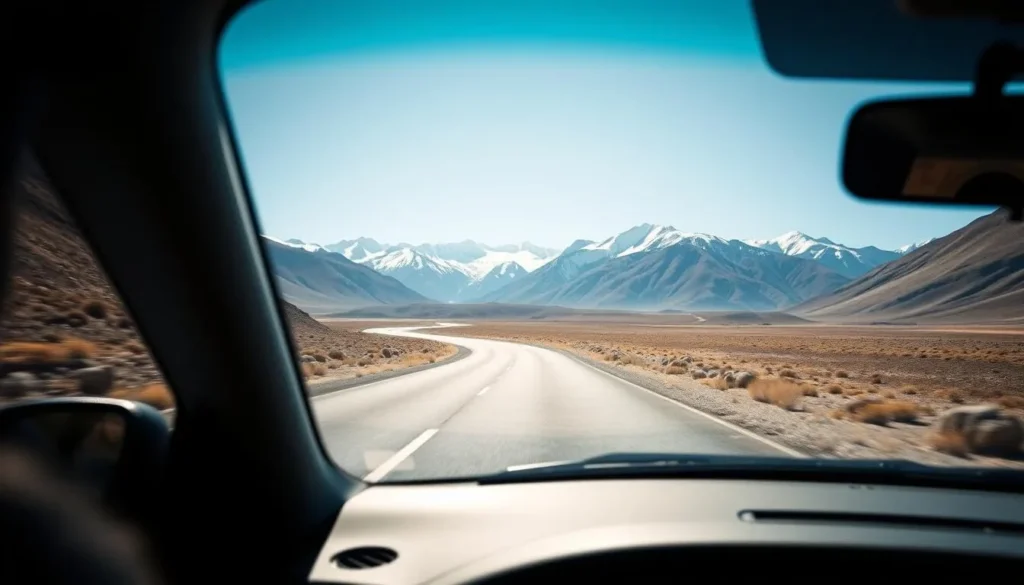
Exploring Neuquén Province effectively requires some planning, as attractions are spread across a vast area. Here are your best options:
Explore Neuquén at Your Own Pace
Rent a car and discover hidden gems throughout the province.
Route 40, Argentina’s iconic highway, runs through Neuquén Province and connects many key attractions. The famous Seven Lakes Route (Ruta de los Siete Lagos) between San Martín de los Andes and Villa La Angostura is one of the most scenic drives in the region.
Where to Stay in Neuquén
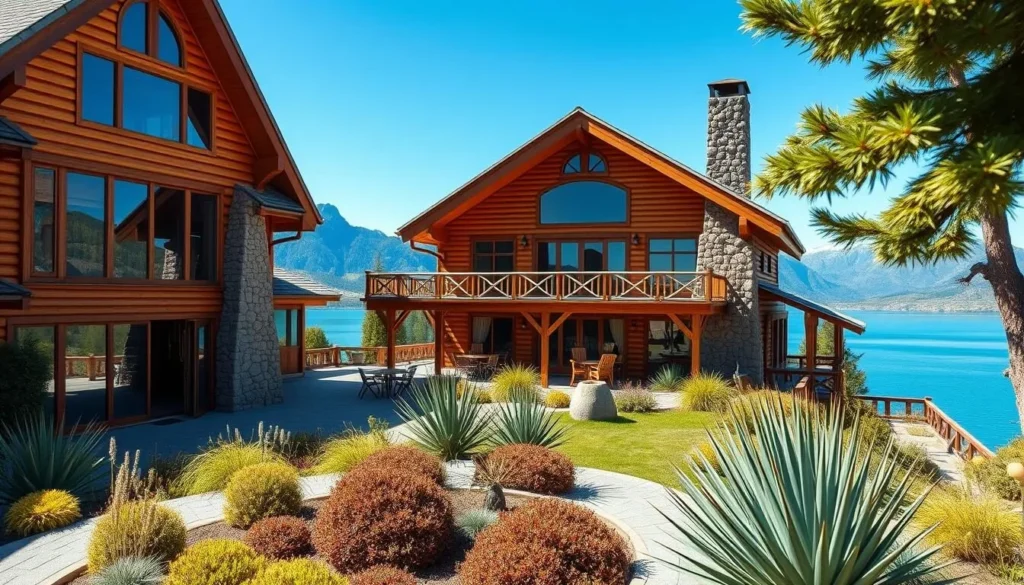
Neuquén Province offers a range of accommodation options to suit different preferences and budgets:
San Martín de los Andes
This charming alpine-style town offers everything from luxury lodges to boutique hotels and hostels. It’s an ideal base for exploring Lanín National Park and the northern lake district.
Villa La Angostura
Known as the “Garden of Patagonia,” this picturesque village features upscale accommodations with stunning views of Nahuel Huapi Lake and easy access to Los Arrayanes National Park.
Neuquén City
The provincial capital offers the widest range of urban accommodations, from business hotels to budget options, and serves as a good base for exploring the eastern part of the province.
Find Your Perfect Stay in Neuquén
From luxury lodges to cozy cabins, book accommodations that match your style.
For a unique experience, consider staying at an estancia (traditional ranch) or a cabaña (cabin) near the lakes or mountains. These options often provide a more authentic connection to the local landscape and culture.
Top Attractions in Neuquén
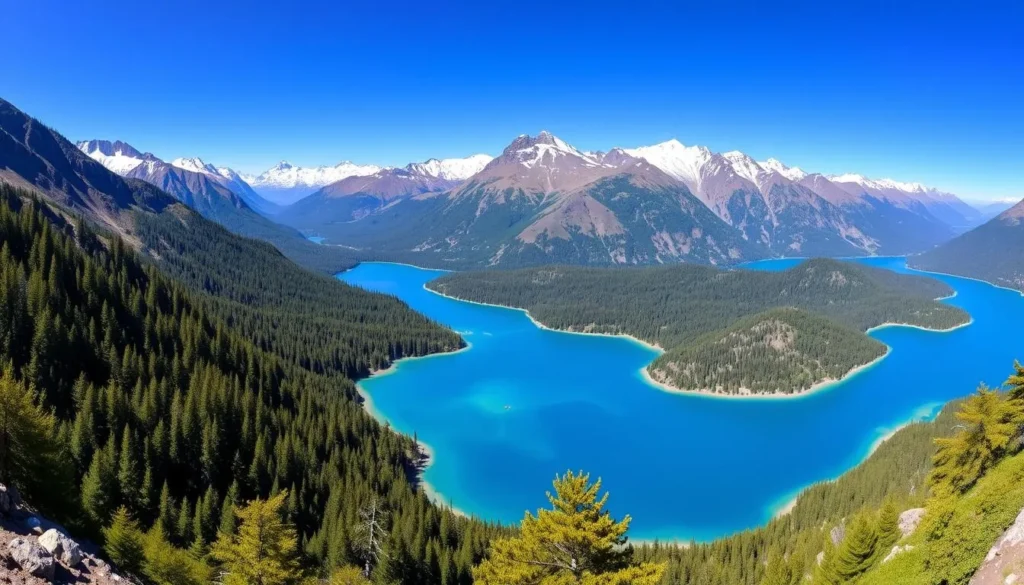
Ruta de Los Siete Lagos (Seven Lakes Route)
This iconic 107-kilometer scenic drive between San Martín de los Andes and Villa La Angostura is one of Argentina’s most beautiful road trips. As the name suggests, it winds past seven stunning lakes: Lácar, Machónico, Falkner, Villarino, Escondido, Correntoso, and Nahuel Huapi. Each offers its own unique charm, from the mirror-like reflections of Lago Espejo to the deep blue waters of Lago Falkner with its white sandy beaches.
“The Seven Lakes Route offers some of the most spectacular scenery in all of Patagonia. Take your time, stop often, and bring your camera—every turn reveals another postcard-worthy view.”
Along the route, you’ll find numerous viewpoints, hiking trails, and picnic spots. The journey can be completed in a single day, but it’s worth taking your time to fully appreciate the natural beauty. Consider stopping at the small village of Villa Traful for lunch with a view of the crystal-clear Traful Lake.
Experience the Seven Lakes Route
Join a guided tour to discover the hidden gems along this iconic route.
Book a Tour
Lanín National Park
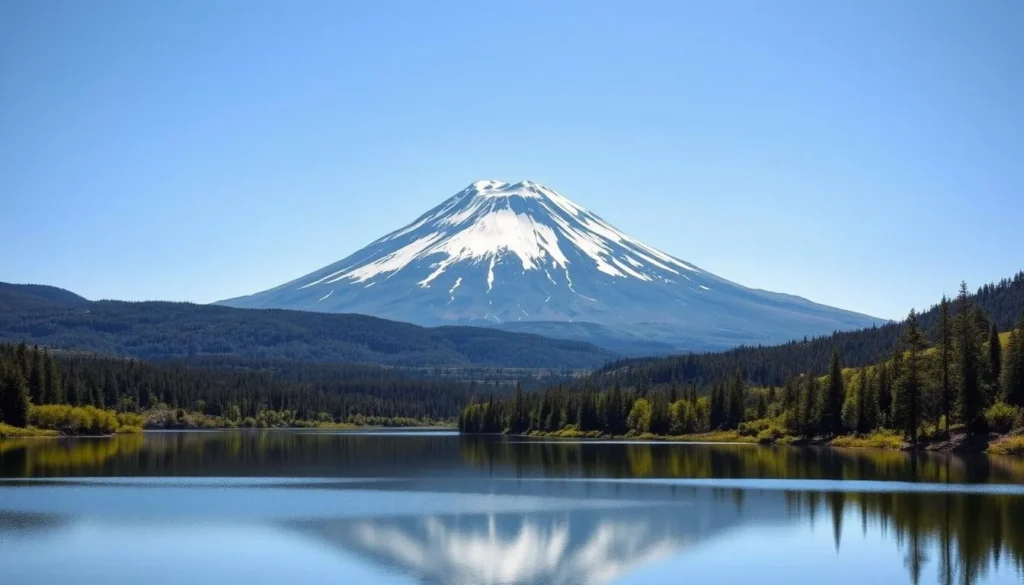
Dominated by the perfect cone of the Lanín Volcano (3,776 meters), this national park protects vast areas of Andean-Patagonian forest. The volcano, with its distinctive snow-capped peak, is a sacred site for the indigenous Mapuche people and a challenging climb for experienced mountaineers (permits required).
The park offers numerous hiking trails for all skill levels, from easy walks through ancient araucaria (monkey puzzle) forests to more demanding treks. Lake Huechulafquen, at the base of the volcano, is perfect for fishing, kayaking, and camping. The park is also home to diverse wildlife, including pudú (the world’s smallest deer), foxes, and condors.
Villa La Angostura and Los Arrayanes National Park
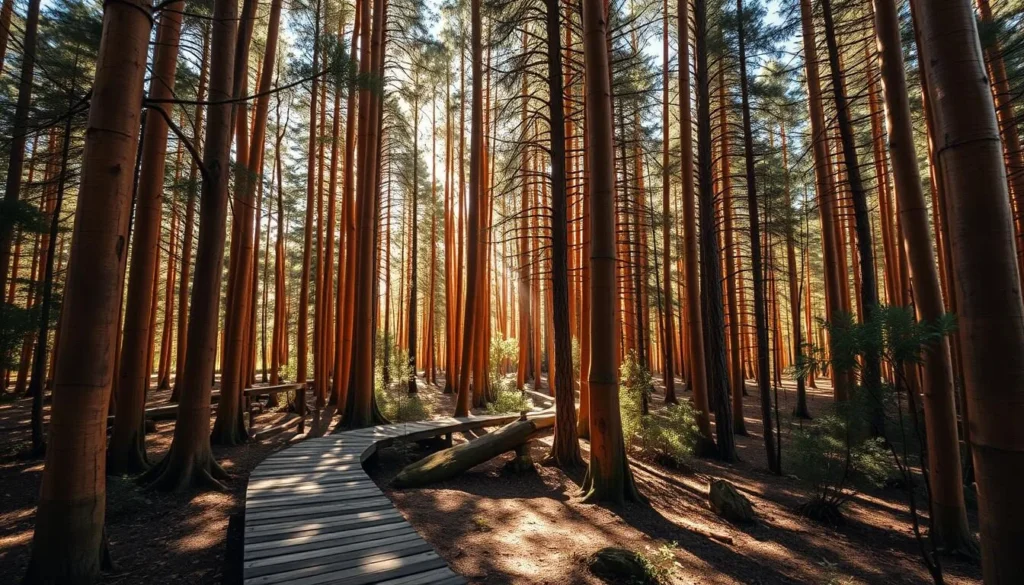
Often called the “Garden of Patagonia,” Villa La Angostura is a picturesque alpine-style village on the shores of Nahuel Huapi Lake. Its main attraction is Los Arrayanes National Park, home to a rare and protected forest of arrayán trees with distinctive cinnamon-colored bark.
The forest is accessible via a scenic 12-kilometer trail from Villa La Angostura or by boat across Nahuel Huapi Lake. Legend has it that Walt Disney was inspired by this magical forest when creating the setting for “Bambi.” The park also offers beautiful beaches, hiking trails, and opportunities for water sports.
San Martín de los Andes

This charming mountain town on the shores of Lake Lácar blends European alpine architecture with Patagonian warmth. Its pedestrian-friendly center is filled with chocolate shops, craft breweries, and artisanal stores selling local products. The town serves as an excellent base for exploring the northern part of Neuquén Province.
In winter, nearby Cerro Chapelco offers some of Argentina’s best skiing and snowboarding. During summer, the lake becomes a hub for water activities, while the surrounding mountains provide endless hiking opportunities. Don’t miss Quila Quina, a beautiful beach area on Lake Lácar with crystal-clear waters perfect for swimming on warm summer days.
Discover San Martín de los Andes
Find the perfect accommodations in this charming mountain town.
Outdoor Activities and Adventures
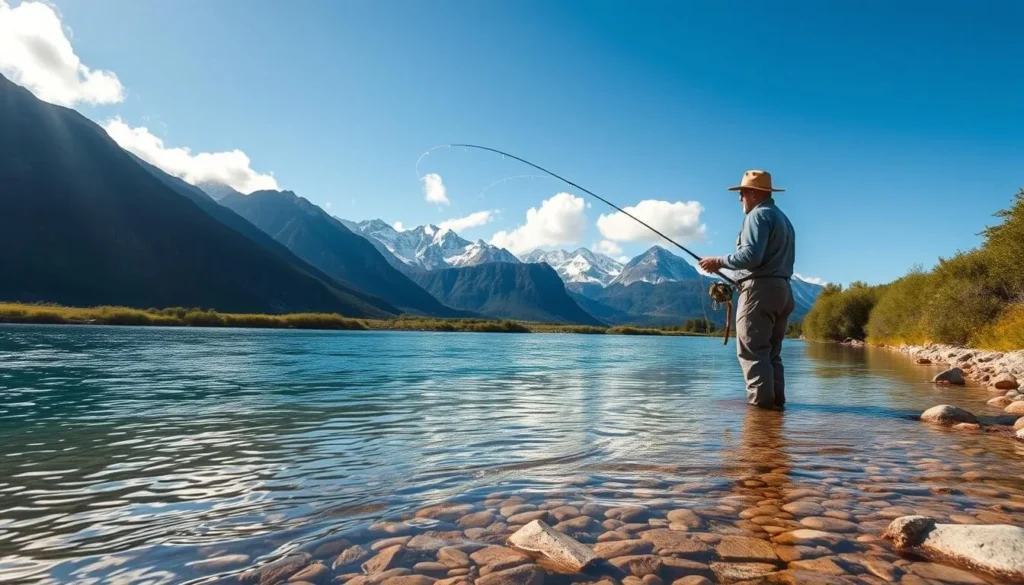
Neuquén Province is a paradise for outdoor enthusiasts, offering activities for every season:
Hiking and Trekking
Explore hundreds of trails through ancient forests, along crystal-clear lakes, and up volcanic slopes. Popular options include the Mirador Bandurrias trail near San Martín de los Andes for panoramic lake views and the Cascada Chachín waterfall hike in Lanín National Park.
Water Activities
The province’s numerous lakes and rivers offer excellent opportunities for kayaking, sailing, and swimming during summer months. The Limay River is renowned for its calm sections perfect for family rafting, while more adventurous travelers can tackle the white-water rapids of the Aluminé River.
Fishing
Neuquén is world-famous for its trout fishing. The Chimehuin, Malleo, and Limay rivers attract anglers from around the globe. Lake Tromen in Lanín National Park is another excellent spot. The fishing season typically runs from November to April, and permits are required.
Winter Sports
Cerro Chapelco near San Martín de los Andes offers 28 ski runs for all levels, modern facilities, and spectacular views. Cerro Bayo near Villa La Angostura is smaller but equally charming, with runs that seem to drop right into Nahuel Huapi Lake.
Mountain Biking
Both San Martín de los Andes and Villa La Angostura have developed extensive networks of mountain biking trails. Cerro Chapelco offers lift-accessed downhill riding in summer, while cross-country enthusiasts can explore numerous forest trails.
Horseback Riding
Experience the Patagonian landscape like the gauchos do, on horseback. Many estancias offer guided rides through forests, across streams, and up to panoramic viewpoints, often combined with traditional asado (barbecue) meals.
Adventure Awaits in Neuquén
Book guided outdoor activities with experienced local operators.
Explore Adventures
Cultural Attractions and Museums
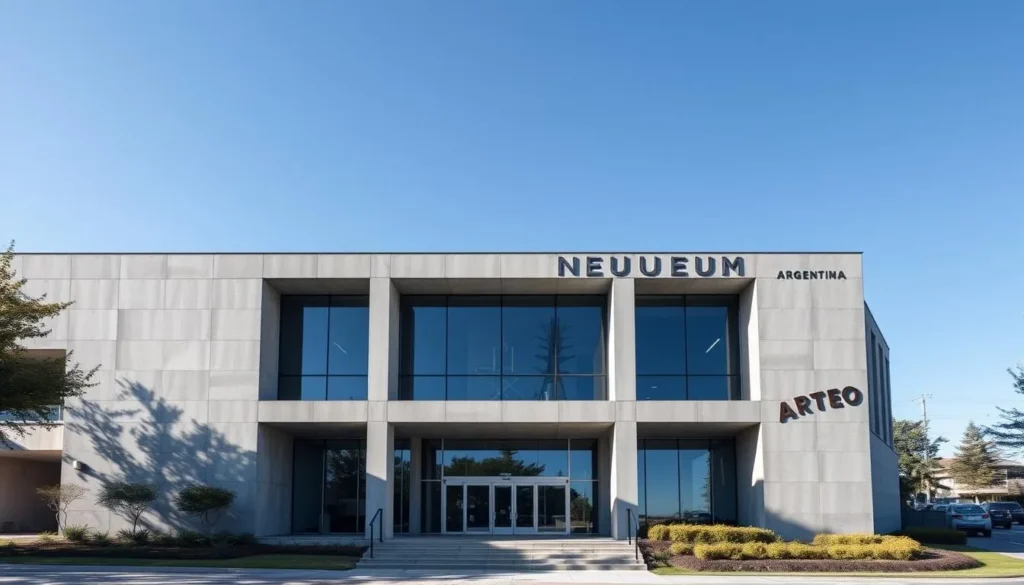
Museo Nacional de Bellas Artes Neuquén
This branch of Argentina’s National Fine Arts Museum houses an impressive collection of modern and contemporary Argentine art. The building itself is an architectural landmark, with a striking modernist design that contrasts beautifully with the surrounding landscape. Regular exhibitions showcase both established and emerging artists from Patagonia and beyond.
Museo Gregorio Álvarez
Located in Neuquén city, this museum focuses on the region’s history and indigenous heritage. Housed in a historic building dating back to 1901, it features archaeological artifacts, historical photographs, and exhibits on Mapuche culture. The museum is named after Dr. Gregorio Álvarez, a prominent figure in preserving the cultural heritage of Neuquén.
Mapuche Communities
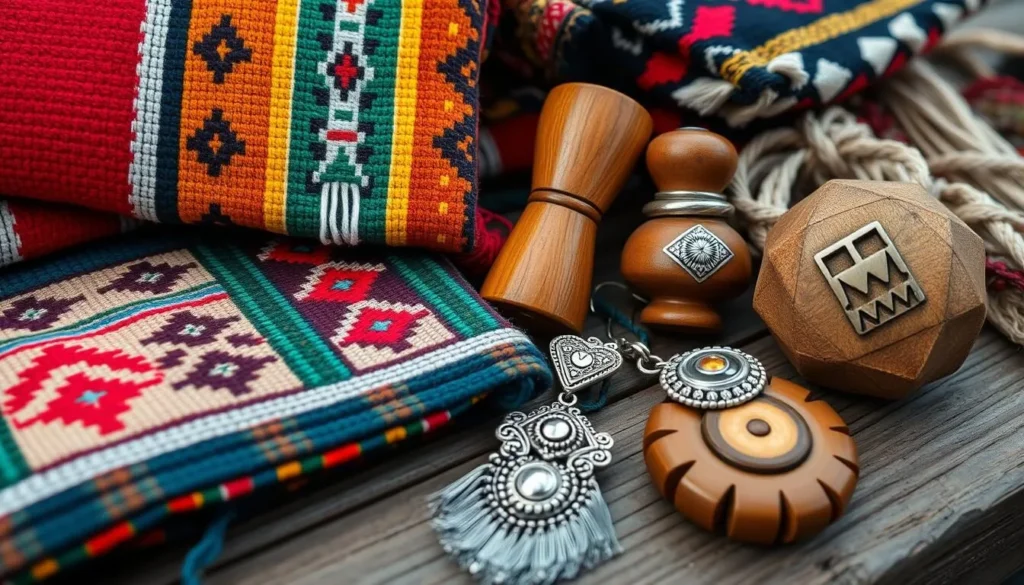
The Mapuche are the indigenous people of the region, with a rich cultural heritage that predates European settlement. Several communities welcome visitors, offering insights into their traditions, crafts, and cuisine. Near San Martín de los Andes, the Curruhuinca community manages access to some beautiful natural areas, including Playa Quila Quina on Lake Lácar.
Visitors can purchase authentic Mapuche crafts, including textiles, silver jewelry, and wooden items, directly from artisans. This not only provides unique souvenirs but also supports the preservation of traditional skills and provides income to indigenous communities.
Paleontological Sites
Neuquén Province is a treasure trove for dinosaur enthusiasts. The arid badlands in the eastern part of the province have yielded some of the world’s most important dinosaur discoveries. The Plaza Huincul area is home to the remains of Argentinosaurus, possibly the largest dinosaur ever to walk the Earth. The Museo Carmen Funes in Plaza Huincul displays impressive fossil collections and life-sized dinosaur reconstructions.
Gastronomy and Local Flavors
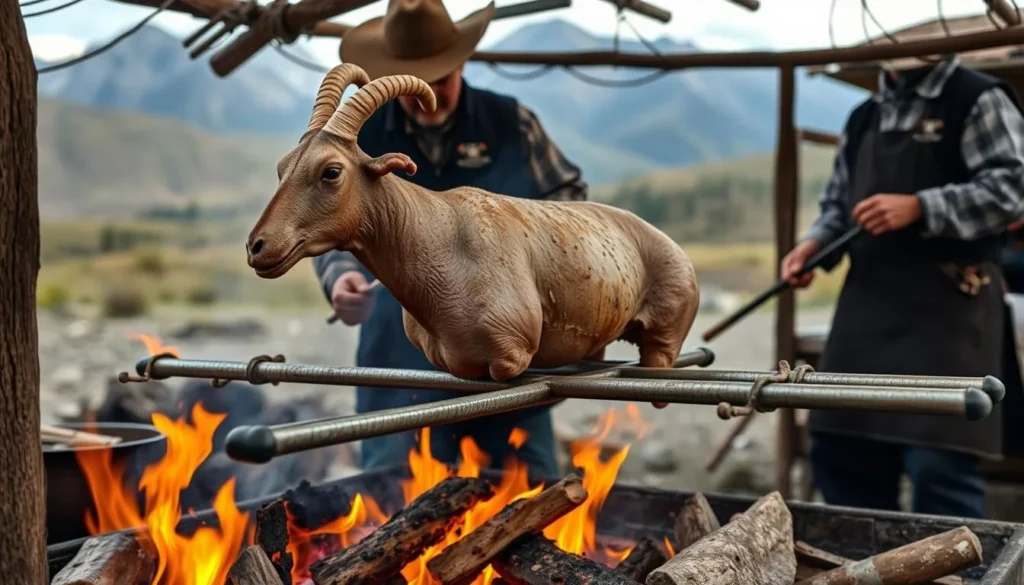
Neuquén’s cuisine reflects its Patagonian heritage, with influences from indigenous traditions and European immigrants. Here are some must-try local specialties:
Patagonian Lamb
The signature dish of the region is cordero patagónico, lamb slow-roasted over an open fire in the traditional asado style. The unique flavor comes from the lamb’s diet of wild herbs and grasses. It’s typically served with chimichurri sauce and simple sides that don’t overshadow the meat’s flavor.
Trout and Other Fish
Given the abundance of pristine rivers and lakes, freshwater fish features prominently on local menus. Rainbow and brown trout are often served grilled, smoked, or in ceviche. Lake Nahuel Huapi’s small indigenous fish, called “puyen,” is considered a delicacy.
Wild Game
Restaurants specializing in regional cuisine might offer wild boar, deer, or hare, typically prepared in hearty stews or grilled. These dishes reflect the hunting traditions of both indigenous peoples and European settlers.
Craft Beer
The region has embraced the craft beer movement, with numerous breweries in San Martín de los Andes and Villa La Angostura producing excellent ales, stouts, and lagers. Many use pure mountain water and local ingredients like Patagonian berries and native herbs.
Regional Wines
While not as famous as Mendoza, Neuquén has a growing wine industry, particularly in the San Patricio del Chañar area. The cool climate produces distinctive Pinot Noir, Merlot, and Sauvignon Blanc varieties that pair perfectly with local cuisine.
Berries and Chocolates
The mountain regions produce excellent berries, used in jams, desserts, and liqueurs. Artisanal chocolate is another local specialty, with shops in San Martín de los Andes and Villa La Angostura offering handmade treats often flavored with regional ingredients like calafate berries or Patagonian mint.
“In Neuquén, food is more than sustenance—it’s a celebration of the land. From the smoke of an asado to the sweetness of wild berries, every flavor tells a story of Patagonia.”
For an authentic experience, look for restaurants displaying the “Cocina Neuquina” seal, which indicates they use local ingredients and traditional recipes. Many estancias also offer farm-to-table dining experiences where you can enjoy regional specialties in a rustic setting.
Practical Tips for Visitors
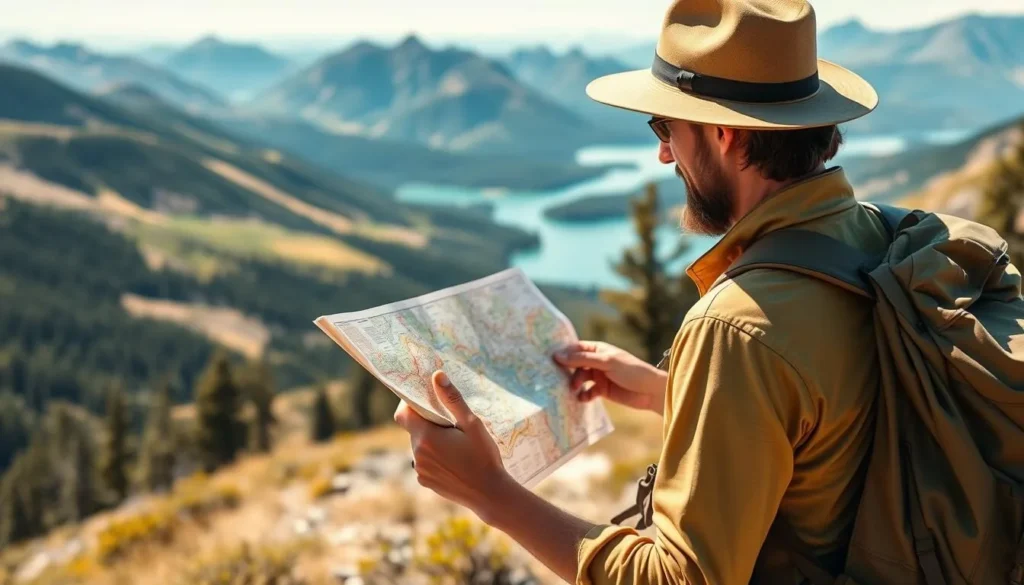
Weather Preparedness
Patagonian weather can change rapidly, even in summer. Pack layers, including a waterproof jacket, regardless of when you visit. In winter, proper cold-weather gear is essential, especially if you plan to visit mountain areas.
Currency and Payments
While credit cards are widely accepted in cities and larger towns, smaller establishments and remote areas may only accept cash. ATMs can be scarce outside urban centers, so carry sufficient Argentine pesos, especially when exploring rural areas.
Language
Spanish is the official language, and while tourism professionals often speak some English, basic Spanish phrases will enhance your experience, especially in less-visited areas. Learning a few words of Mapudungun (the Mapuche language) is appreciated when visiting indigenous communities.
Connectivity
Cell phone coverage can be spotty in remote areas and national parks. Download maps and essential information before heading to isolated locations. Major towns have internet cafes and many accommodations offer Wi-Fi.
Border Crossings
If you plan to visit Chile, check the status of mountain passes, as they can close due to weather conditions, especially in winter. The most commonly used crossings are Cardenal Samoré (near Villa La Angostura) and Mamuil Malal (near Junín de los Andes).
Permits and Regulations
Fishing requires permits, which can be purchased in sporting goods stores or tourist offices. National parks charge entrance fees, and some activities (like climbing Lanín Volcano) require special permits that should be arranged in advance.
Safety Tip: When hiking, always inform someone of your route and expected return time. Weather conditions can change quickly in mountainous areas, and cell phone coverage may be limited or non-existent on trails.
Suggested Itineraries
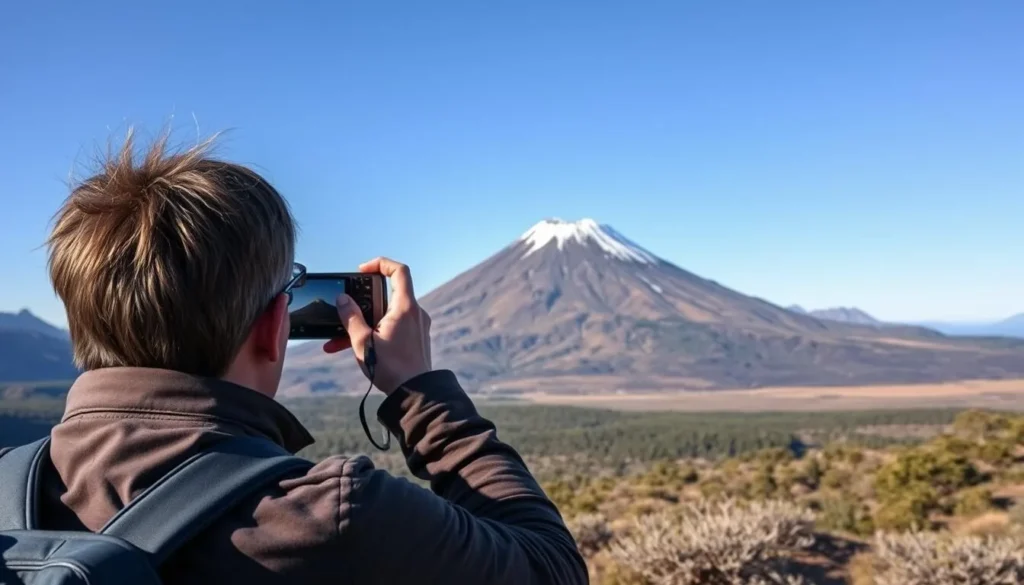
3-Day Highlights Tour
7-Day Comprehensive Exploration
Adventure Itinerary
Create Your Perfect Neuquén Adventure
Let local experts help you design a customized itinerary based on your interests.
Plan Your Trip
Neuquén Province Map
Frequently Asked Questions
Is Neuquén safe for tourists?
Neuquén Province is generally considered safe for tourists. As with any destination, basic precautions should be taken, especially in urban areas. The main cities have tourist police who speak English and can assist visitors. In natural areas, safety concerns are primarily related to weather conditions and outdoor activities, so always follow local advice and guidelines.
Do I need a visa to visit Argentina?
Visitors from many countries, including the United States, Canada, Australia, and most European nations, do not need a visa for stays of up to 90 days. However, requirements can change, so check with the Argentine embassy or consulate in your country before traveling. All visitors need a passport valid for at least six months beyond their planned departure date.
What is the best way to get from Buenos Aires to Neuquén?
The most convenient option is flying, with multiple daily flights connecting Buenos Aires to Neuquén city (approximately 2 hours). Alternatively, long-distance buses offer comfortable overnight services (14-16 hours), with fully-reclining seats available in premium classes. Renting a car in Buenos Aires and driving is possible but involves a long journey (approximately 1,200 kilometers).
Can I drink tap water in Neuquén?
Tap water is generally safe to drink in urban areas and major tourist destinations in Neuquén Province. However, in remote areas or when hiking, it’s advisable to use purified water. Many locals and visitors prefer bottled water, which is widely available.
What should I pack for a trip to Neuquén?
Regardless of the season, pack layers to accommodate temperature variations. Essential items include: a waterproof jacket, comfortable hiking shoes, sun protection (hat, sunglasses, sunscreen), a daypack for excursions, and a reusable water bottle. In winter, add thermal underwear, gloves, and a warm hat. For summer, include swimwear for lake activities.
Experience the Magic of Neuquén
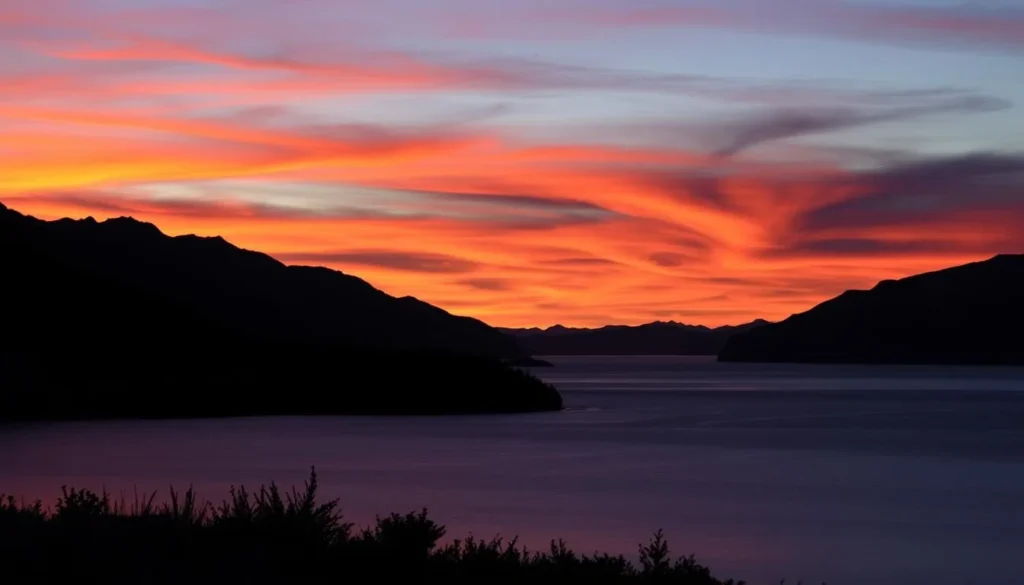
Neuquén Province offers a perfect blend of natural wonders, outdoor adventures, cultural experiences, and culinary delights. From the majestic Lanín Volcano to the crystal-clear waters of the Seven Lakes, from world-class fishing to fascinating dinosaur discoveries, this corner of Patagonia promises unforgettable experiences for every type of traveler.
Whether you’re seeking adrenaline-pumping activities, peaceful communion with nature, or insights into indigenous culture and regional history, Neuquén welcomes you with open arms and breathtaking landscapes. As you plan your journey to this remarkable destination, remember that the true magic of Neuquén lies not just in its famous attractions, but in the unexpected moments of wonder that await around every mountain bend and lakeshore. Your Patagonian adventure starts here—are you ready to discover the treasures of Neuquén?
Begin Your Neuquén Adventure Today
From flights to accommodations to guided experiences, we’ve got you covered.
Explore Tours
The above is subject to change.
Check back often to TRAVEL.COM for the latest travel tips and deals.
